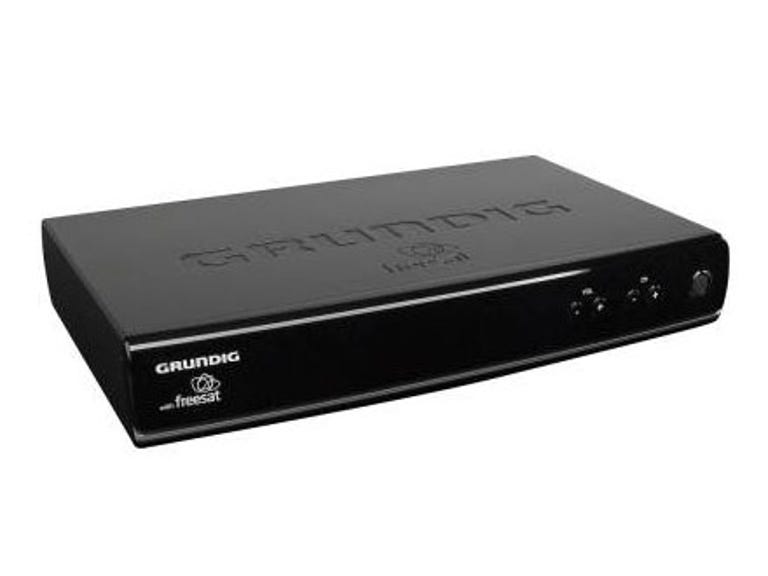 Why You Can Trust CNET
Why You Can Trust CNET Grundig freesat receiver (GUFSAT01) review: Grundig freesat receiver (GUFSAT01)
The Grundig freesat receiver (GUFSAT01) is an excellent option for the 27 per cent of UK who do not get a Freeview signal to switch over from analogue to digital. The box itself is pretty fast at responding to the remote commands and is a good size, with a generous helping of ports
If you're currently one of the 27 per cent of the population who can't get a Freeview signal, this box will save you from the horrors of a blank screen when the digital switch-over comes. It's one of the first batch of freesat boxes to hit the market, offering digital TV via your satellite dish. It's available now for £50 online.
The Good
The Bad
The Bottom Line
Strengths
The box itself is about the size of a hardback treatise on the evils of Nazism, so it won't take over your front room. Unlike the Humax Foxsat-HD, it's only standard def, but there's still a generous helping of ports.
Surprisingly, there's a digital audio out at the rear, along with two Scarts, analogue audio and an Ethernet connection. The latter isn't useful for anything yet, but will be one day when the freesat folks work out how to connect it to broadband for interactive services. It's also good to see a pass-through connector for the satellite signal, so you can send the signal to another box if you want, although you'll have to buy a separate cable.
The remote is fine, with everything pretty much where you'd expect and none of the redundant buttons we've occasionally seen on Freeview boxes.
The box is fairly nippy, responding to change channel commands in about a second, and the picture is a similar quality to the one available on Freeview. Whether that means 'good' or not depends on what you're currently watching.
If you're watching Countdown in a static caravan in Morecambe (your friends probably call you 'Rog') from a fuzzy analogue signal, it will be a big improvement, but we didn't notice a significant difference switching between BBC One on our Freeview Sony telly and the Grundig freesat feed.
Helpfully, the first screen shows you how strong your signal is, giving you a chance to fiddle with the dish if you need to improve it. Then, though, our box spent four minutes downloading new system software and restarting. Although frustrating if you simply want to get Quincy on the go asap, it's actually a good idea, as freesat is a new platform and there will be new software that irons out bugs and adds new features all the time.
Weaknesses
There are some things about the installation that could be smoother -- the box wildly overestimates and underestimates the time taken to scan for new channels, for example, with the indication bar fluctuating between 11, 14, 12, 10, eight minutes and finally 54 seconds during the seven minutes it actually took to scan. Finally, it seemed to turn off and refused all our attempts at waking it up. A few hard power ons and offs later, it decided to play ball again.
Other irritations include the slightly sluggish electronic programme guide (EPG) -- it can take up to 10 seconds for the programme listings to load. You also have to push the info button twice to see a description of the programme you're watching.
There's something slightly funny going on with the interactive stuff too. Our first push of the red button on BBC One gave us the 'please wait' message, but no more. After changing channels and coming back, however, it did work.
We looked at the news headlines -- it took five seconds for the page to load, with a small delay before each story appeared. It was noticeably slower than our two-year old Sony TV with Freeview built-in, but that is an example of a particularly fast TV, and it will be faster than many cheap Freeview boxes.
Conclusion
For anyone without a hi-def TV and a Freeview signal, this is a perfectly acceptable way of getting into freesat. We'd like to see the price edge towards the £30 mark, but apart from a few niggles, there's nothing major to worry about here.
Editing by Jon Squire


